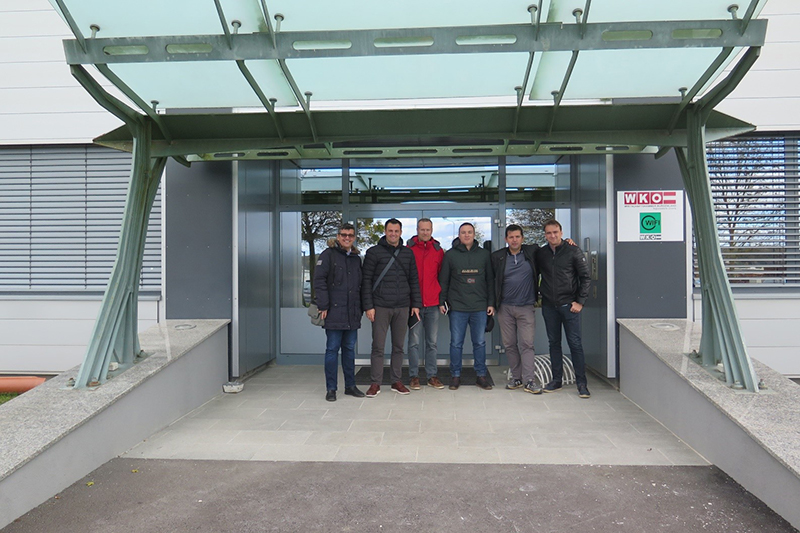As a part of the RuRES project, members of the FERIT and University of Kaposvar project team attended a tree-day study visit to Gussing in Austria…
As a part of the RuRES project, FERIT and University of Kaposvar project team members attended a tree-day study visit to Gussing in Austria. Gussing is a small town supplying thermal and electrical energy needs from renewable energy sources. The study visit was organized to acquire new knowledge and experience in using renewable energy sources in rural areas for the RuRES project. At the beginning of the study visit, the project team members attended the presentation entitled “Model Gussing” by Dr. Joachim Tajmel in Gussing Technical Center. “Model Gussing” represents the strategy of decentralised and local production of electricity from every renewable energy source available in the region. The strategy defines methods for local harvesting of renewable energy in order to decrease energy import and energy dependency, protect the environment and provide growth of the local economy.

Project team members in front of Gussing Technical Center
Upon presentation, the project team members have visited different types of facilities which use renewable energy sources. The first facility was a wooden biomass gasification combined heat and power (CHP) plant. Practical experience and benefits of this power plant type were presented. Wooden biomass used for operation of this plant is provided from local resources..

Project team members in front of CHP plant
After the visit of CHP plant, the project team members visited the “Gussing Energy Technology” research center. They were welcomed by leader of the center dr. Richard Zweiler. Dr. Zweiler gave a quick brief of current research activities and bioenergy2020+ scientific-research project.

Combustion comparison of classic “dirty” diesel fuel with clean synthetic fuel obtained from wooden biomass
Furthermore, dr. Zweiler presented how different types of biomass can be used for production of synthetic natural gas, methane, biofuel etc. He also demonstrated combustion comparison of classical “dirty” diesel fuel with clean synthetic fuel obtained from wooden biomass.
The next visited facility was biogas CHP plant within the “Wolf Noodles” company. Biogas is produced from vegetable substrate, poultry manure, corn and grass silage.
Then, the project team members visited Urbersdorf village. Urbersdorf has centralised heating system which supplies entire village with thermal energy needed for heating. The facility uses wooden biomass and solar energy for thermal energy production which is then distributed through heating pipes to the village. The entire amount of biomass used by this facility is obtained from local resources by regular forest maintenance activities. Users can pay part of the heating bill with wooden biomass.


Urbersdorf central heating system
After Urbersdorf, the project team members visited Strem climate protection community. The community presented application of different renewable energy sources harvesting technologies for electricity production and efficient energy use.
The team also visited solar school Gussing where the advanced laboratory for the thermal usage of solar energy and photovoltaic systems were presented. Furthermore, the team members visited a wastewater management system. The facility uses separated aerobic stabilization of mud and photovoltaic power plant for electricity production. Final enriched and separated substrate is then used as a fertilizer on local farmlands while purified water is released into the local river.



Wastewater management system in Glasing
During the study visit, tour guide was dr. Joachim Tajmel. FERIT project team members which attended the study visit are: Danijel Topić, Denis Pelin, Zvonimir Klaić and Goran Knežević. University of Kaposvar project team members which attended the study visit are: Alexandar Titov and Tamas Trenyik. The study visit was financed as a part of Interreg V-A Hungary-Croatia Co-operation Programme 2014-2020 by RuRES project (HUHR/1601/3.1.1/0033).
